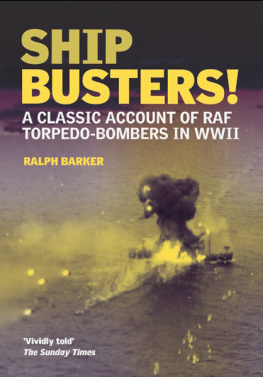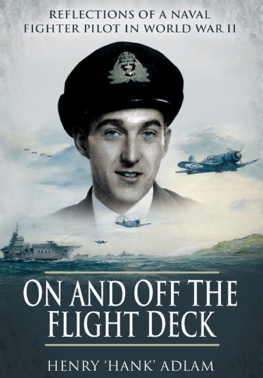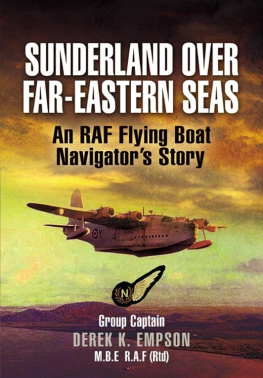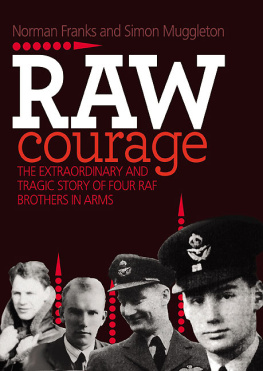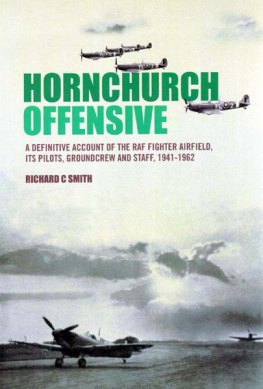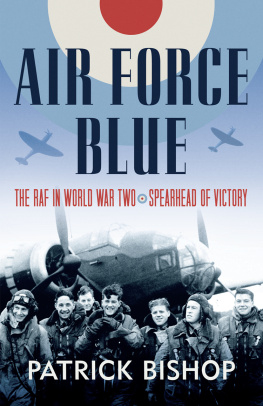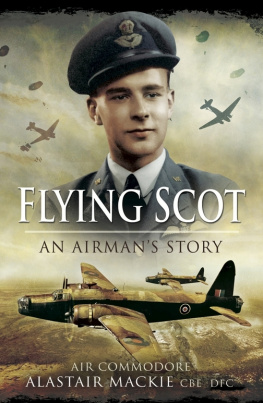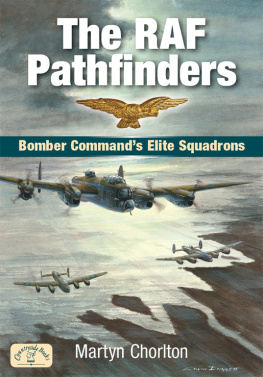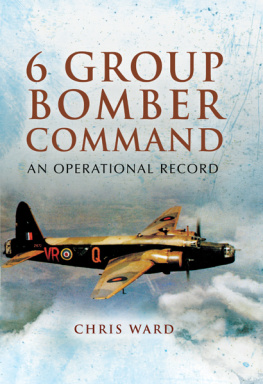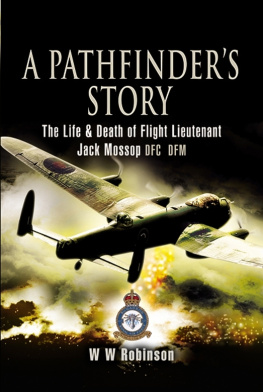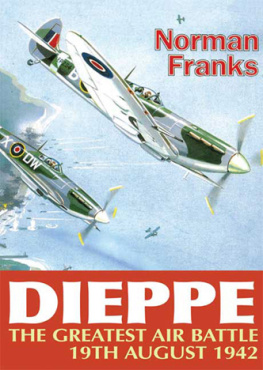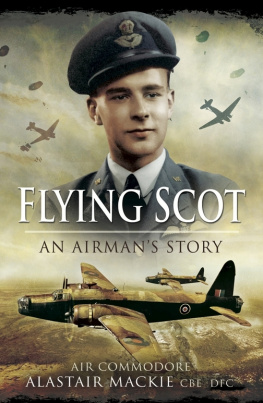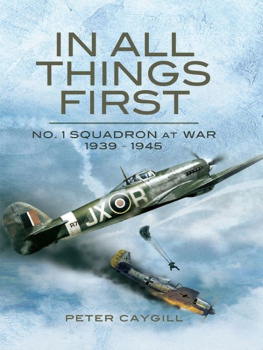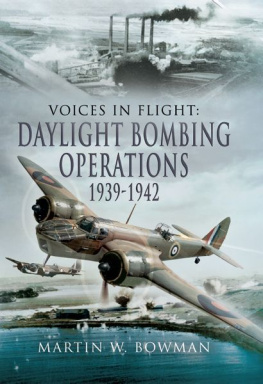
Published by
Grub Street Publishing
4 Rainham Close
London
SW11 6SS
Copyright Grub Street 2009
Copyright text Sean Feast 2009
British Library Cataloguing in Publication Data available on request
ISBN: 9781906502522
EPUB ISBN: 9781909166714
All rights reserved. No part of this publication may be reproduced, stored in a
retrieval system, or transmitted in any form or by any means electronic,
mechanical, photocopying, recording, or otherwise, without the prior permission
of the copyright owner.
Typeset by Pearl Graphics, Hemel Hempstead
Printed and bound by MPG Ltd, Bodmin, Cornwall
Grub Street Publishing uses only FSC (Forest Stewardship Council)
paper for its books
FOREWORD
The author is an ex-Halton aircraft apprentice, a body of RAF men of whom it is often said can go anywhere and do anything. This is well borne out by A Pathfinders War, which is really three books in one.
The first section relates how a farmers boy aged 15 joins the Royal Air Force, trains for almost three years as a fitter, but then becomes a flight engineer in Bomber Command, flying first the Halifax and then Lancasters throughout the whole of the Second World War. Not only was Ted Stocker one of the very first men to wear the flight engineers wings, but he went on to achieve the very rare distinction of winning the Distinguished Service Order (DSO) in those duties. He is also a remarkable survivor. As he mentions in the book, as early as 1943 only 2.5% of all aircrew lived to see the end of two flying tours, i.e. 50 operational missions. Ted was still going strong after no fewer than four tours and more than 100 operational sorties. As he tells us himself, he is a walking miracle.
The five chapters dealing with his wartime experiences will be of particular interest to aviation historians, showing as they do the remarkable variation of operations that the Pathfinder force led all across Europe. The last part of the book is no less interesting for the variety of post-war flying in which he was involved, for example taking Bomber Harris on a tour of Brazil at the end of the war, and then crewing the first of the new Neptune aircraft across from the United States when these aircraft came to equip Coastal Command. Even that did not complete his remarkable career, since he then left the RAF and went into industry, first with De Havilland and then into the petro-chemical industry truly as colourful and as fulfilling a life as anyone could wish for.
Air Chief Marshal Sir Michael Armitage KCB CBE
Former Halton aircraft apprentice
PROLOGUE
In 1937 all aviation-mad youths such as myself knew that the revolutionary Mayo Composite aircraft was being built at Short Brothers works at Rochester, and my friend and I had a geographical advantage. We could cycle to the factory in an hour or less, and camp out at a public right of way between the hangar and the slipways. From there we could see the flying boats and seaplanes moored in the river only a dozen yards away.
The premise for Mayo was simple: tests had proven that an Imperial Airways Empire flying-boat could achieve a transatlantic crossing only if its entire payload consisted of fuel. Since it was well known that an aircraft could be flown at a much greater weight than that at which it can take off from the ground, aircraft designer Robert Mayo proposed that a small heavily loaded mail-plane be carried to operational altitude above a larger mother plane and then released to complete its long-range task. The proposal was accepted by the Air Ministry, and the aircraft manufacturer Shorts contracted to design and build the composite unit. The Short S21 Maia, the lower component, was a slightly enlarged and modified version of the Empire boat; the Short S20 Mercury, the upper long-range unit, was an entirely new high-wing twin-float seaplane with four engines and a range of 3,800 miles.
The Maia first flew on July 27, 1937 and the Mercury 13 days later. We made several trips to see them on the river and on at least one occasion saw the pair perched on top of each other. At the controls of Maia was Captain A. Wilkinson; in command of Mercury was a young Australian, already a well-known name in aviation circles as a master navigator and airman extraordinary in every sense. One day in the playground at school as I saw the full eight-engined Mayo Composite aircraft fly over, I could not possibly know that only a few years later I would be sat in the co-pilots seat next to this very same man, the man who would become the pioneer and founder of the Pathfinder force, Donald Bennett.
CHAPTER ONE
LEARNING
Like hundreds of little boys before me, and many thousands since, I had always wanted to be a pilot. Born on August 31, 1922, just four years after the end of the First World War, aircraft fascinated me. I fed unashamedly on a diet of war books and aircraft manuals, and was a particular fan of W. E. Johns and his eponymous hero Biggles.
My love of flying was an escape from school where I enjoyed a steady, if unspectacular, career. I lost out on the lottery of state education. At junior school, initially, I did fairly well, usually finishing in the top three or four of my class, and occasionally first. Then the education authorities made a small change in the age groups and I found myself in a class with boys who had been at the school a year longer. Not surprisingly, when the eleven plus exam came along I was still struggling to catch up and failed. For this reason, and a fight with the headmasters son, I was held down a year. The school was Sheerness Junior Technical School which had been built in 1910, and served as a hospital in the First World War. Among my contemporaries was a youngster called Norman Penney, whose uncle Bill Penney had also been a pupil there and had become Lord Penney of East Hendred OM KBE, the first director of British nuclear weapons research.
It was generally accepted when we were at school, and perhaps therefore a sign of the times, that university was reserved for grammar school boys, whereas the rest of us went to technical school. Our headmaster, Dr Bell, wanted to put Bill Penney up for university but was told by the Kent education authority that he was not university material. Later when Bill became famous and his exploits were reported in the press at various times, Dinger Bell (as our headmaster was inevitably nicknamed) would send the authorities the cuttings with a note stuck on the bottom that simply said not university material!
Living so close to the sea, most of my friends found their careers already mapped out for them by their families, and this usually meant either an apprenticeship in His Majestys dockyards, or joining the navy itself as an artificer apprentice. My father was a grazier who had lied about his age to sign up for the Boer War but was rejected for being too short. He volunteered again for the First World War and served in the trenches. He later ran sheep on a nearby rifle range as well as a small plot of land that we owned on the edge of Sheerness. My father had already warned me that a career in farming offered nothing but hard work and little reward, and was encouraging of my proposals to join the Royal Air Force, which I could do via an apprenticeship at RAF Halton.
There was one other boy at the school whose father was in the RAF at Eastchurch, and the pair of us decided we would sit the RAF entrance exams. I had talked to my cousin, an equipment officer, and he advised me to become an apprentice at Halton because in his words you could go anywhere from there, and do anything. So I took his advice. Dinger Bell didnt want me to take the exam when I did he wanted me to wait until the next summer and finish off my education properly but I ignored him. Thats why I was only 15 when I ended up in the air force.
Next page

